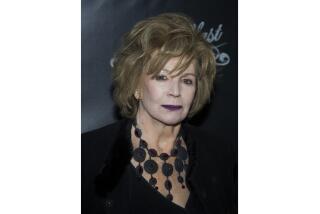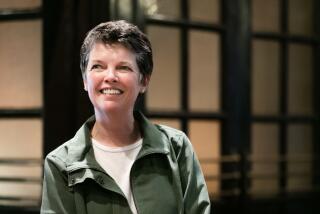DISCOVERIES
- Share via
Tea and Green
Ribbons
A Memoir
Evelyn Doyle
Free Press: 256 pp., $24
In 1953, when Evelyn Doyle was 7, her mother left her, her father and five brothers for another man on Christmas morning. Desmond Doyle was a painter and decorator. He was forced to leave Ireland, where the family lived, and work on a job in England to make some extra money. When he returned, the Irish state took custody of his children and divided the family, sending them to institutional schools. Evelyn was sent to a convent. After a two-year battle in the Irish Supreme Court, Doyle won custody of his children. The court ruled that the Children’s Act of 1941 (a British law) was incompatible with the Irish constitution.
Thirteen years later, Evelyn went to visit her mother and found that she had four new children. She told them that Evelyn was just a little girl she had once taken care of. “This was the second time she abandoned me,” writes Doyle in her characteristically understated style. It’s an astonishing story of courage and will and love, yet another chapter of what might be called the “Angela’s Ashes” backlash.
Since Frank McCourt’s first memoir and beginning with his own brother Malachy’s story, there have been several works of fiction and nonfiction from Ireland that wrest a kind of pride from the suffering of ancestors, a sense of victory and survival rather than of failure and defeat. It is the voice of a child, Evelyn Doyle, that permeates this memoir and makes it so inspiring. A child bewildered by the capriciousness of her elders but holding on to her belief in the world’s promise and humanity’s goodness. In such memoirs, the closer that voice is to the skin of the adult author as he or she looks back, the more powerful the book will be, because every child to some degree feels that same bewilderment and every adult remembers that feeling. Doyle’s voice rings clear as a bell. Her daddy fought the odds and won. Her contagious sense of triumph fills the memoir and spills over into “Evelyn,” the movie that is based on her story.
*
Cathedrals of the
Flesh
My Search for the Perfect
Bath
Alexia Brue
Bloomsbury: 256 pp., 24.95
Hammam, onsen, banya: No matter what you call it, for some of us it’s the source of all comfort, the great womb incarnate: the bath. Alexia Brue, a self-taught hedonist of the New York school, took her search for the perfect plunge very seriously. “Cathedrals of the Flesh” began as research for a business when she and a friend agreed to open a bath together, a most elegant bath with alabaster walls and bathing choices from around the world. It became a quest.
She begins her study in Paris at the fashionable Les Bains du Marais, “a glimpse back to the Ottoman Empire, with gommage” (skin scrubbing with a heavy mitt). She visits a 400-year-old hammam (steam bath) in Istanbul, then moves on for a taste of the Greek thermae. She gets earthy in Russia with the women in the public banya, learns to beat herself pink with birch branches and then goes to Finland, birthplace of the sauna. In Finland she finds the experience lonelier than in St. Petersburg or Moscow, the bathers more reserved, but this is cured by a trip to Japan, where the onsen involve intricate rituals but are also friendly and communal in atmosphere.
Brue’s focus on baths gets her into the heart of the cultures she visits. She has an unflinching pair of eyes when it comes to changing rooms and cultural approaches to nakedness. As we learn, this intimate ritual exposes the most fundamental prejudices, fetishes and attitudes toward sexuality, but the book is also a personal story. Like so many travel writers, Brue tells us what it is she is running to and from. A reader can share her delight, her openness and her observations. “Cathedrals of the Flesh” is a lark.
More to Read
Sign up for our Book Club newsletter
Get the latest news, events and more from the Los Angeles Times Book Club, and help us get L.A. reading and talking.
You may occasionally receive promotional content from the Los Angeles Times.










